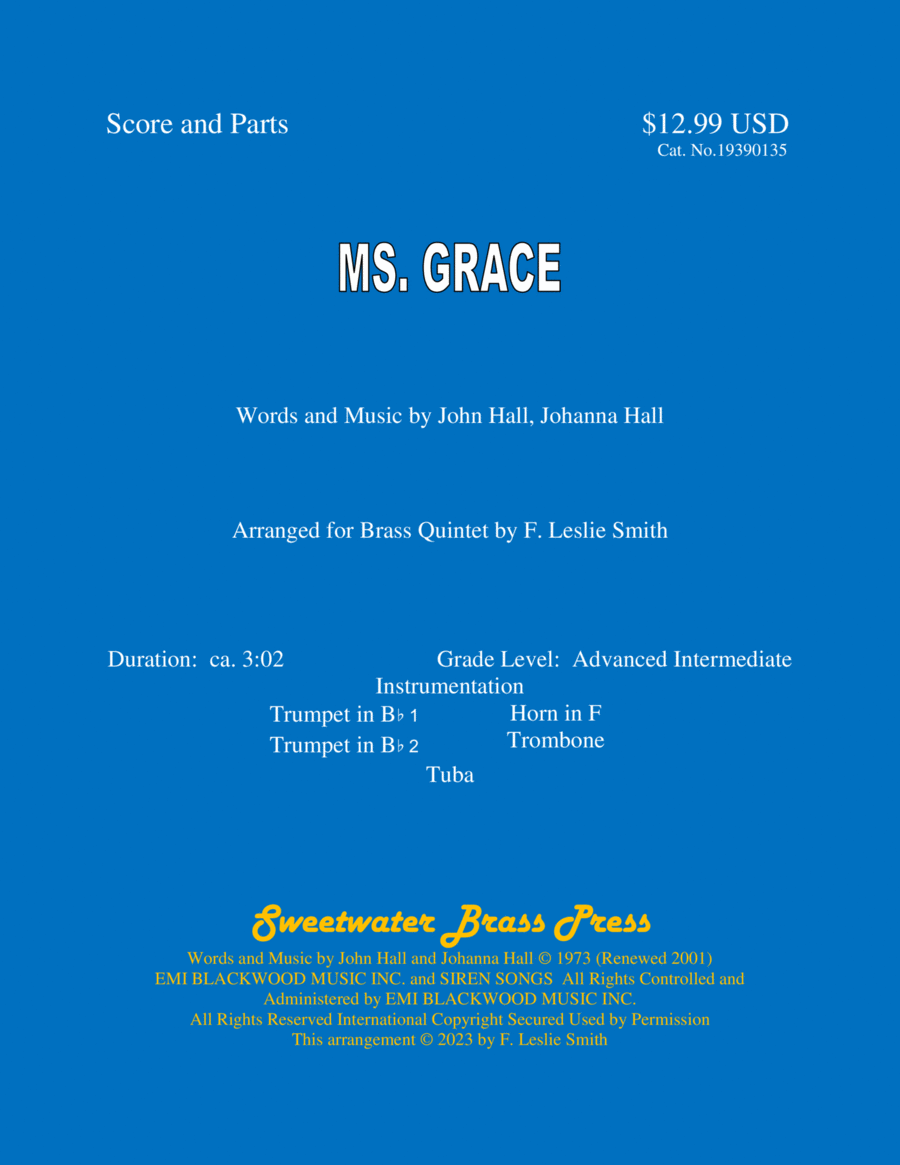Brass Ensemble,Brass Quintet Horn,Trombone,Trumpet,Tuba - Level 4 - Digital Download SKU: A0.1202140 Composed by Johanna Hall and John Hall. Arranged by F. Leslie Smith. Contemporary,Disco,Hip-Hop,Pop,R & B,Rock. Score and parts. 27 pages. Sweetwater Brass Press #800795. Published by Sweetwater Brass Press (A0.1202140). John Hall and his then-wife Johanna had written several hit songs for John's group, Orleans.  Johanna wanted to create a song in the 1950s doo-wop style she so admired.  They did, and their composition described a certain Miss Grace who enchanted the lyricist with her âsatin and perfume and lace.â  The problem was: that song really did not fit in with Orleans' pop rock repertoire and image.  Meanwhile, The Tymes, a Philadelphia group, was looking for a number that might revive its popularity.  So when the Miss Grace song was suggested they decided to take it on. This was the mid-1970s, just when the honorific Ms. was growing in use.  So The Tymes changed the song's title to âMs. Grace.â  Released as a single, the song did very well in the UK, topping the chart at number one in January 1975.  Written in 4/4 time, this brass quintet version flows along at about 104 BPM.  Beginning notation instructs that eighth-note pairs are to be played so that the first note is about twice as long as the second; in other words, swing style.  It retains the original D major key, but gives most of the melody to Horn and Trombone an octave lower so that it stays within normal playing range of the group.  The nature of the song is such that there are a number of phrases that begin with off-beat pickup notes. Trumpets provide accents and flourishes and occasionally take over the melody for a few measures.  Tuba really does the most work, playing through almost the entire piece.  Completed in 2023, performance time runs about 3 minutes, 3 seconds. The arranger, Les Smith, will be happy to provide substitute parts (for example, treble clef baritone for trombone) at no charge.  He would like to receive your suggestions, comments, corrections and criticisms.  For more arrangements by Les, enter Sweetwater Brass Press (without the quotation marks) in the Sheet Music Plus or Sheet Music Direct search box.  (Also, purchase of this piece entitles you to your choice of another of his arrangements at no charge; send a copy of your purchase receipt directly to him at lessmith61@bellsouth.net.).
